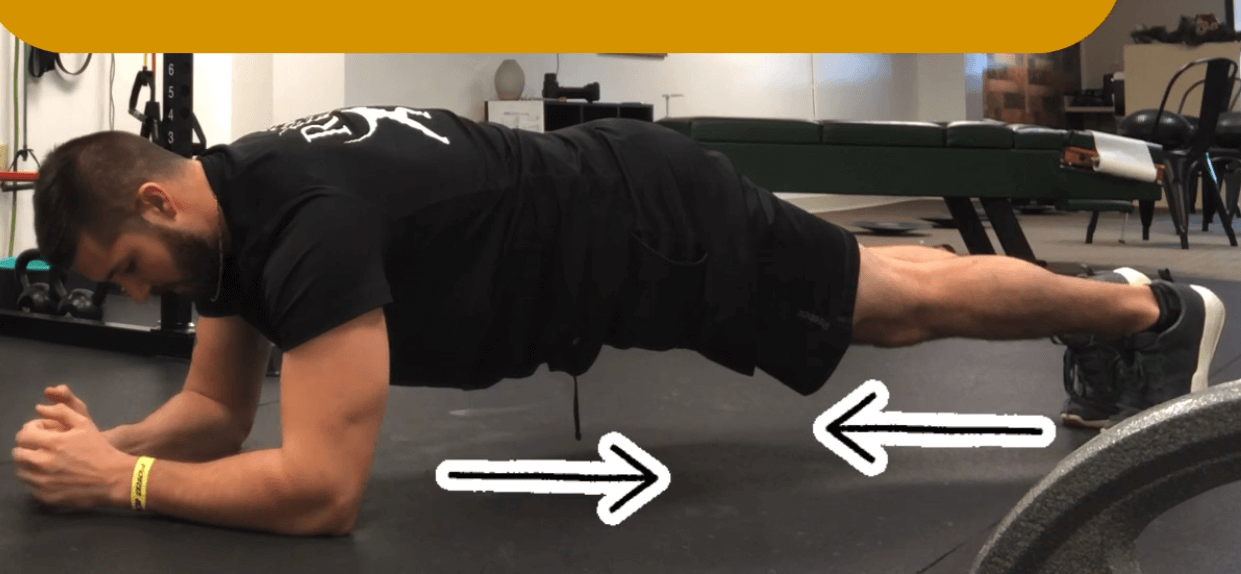Table of Contents
The Plank Exercise
If there is one core exercise that is both loved and hated it is the plank exercise. The plank is a great exercise for core strength and stability. It can be used as a preventative measure as well as a rehab procedure for lower back pain. It’s a great functional exercise that translates into many other exercises. Lastly, it is a great way to build those 6-pack abs, if that’s what you’re into. None of that matters, however, if you are doing it wrong. So, I’ve made it my goal to teach you how to master proper plank form and how to make the most out of your time spent doing it.
The great thing about the plank is that it requires no exercise equipment to do. You can do this exercise in the comfort of your own home, your office, at the gym or literally anywhere else you can think of. There are also many different variations of the plank, some of which I covered in an earlier post that you can find here. For now, I will simply be covering the forearm plank.
Proper Plank Form
- Begin the plank by resting your forearms, elbows and palms firmly on the floor. Your elbows should be directly beneath your shoulder joints.
- Your toes should also be grounded shoulder width apart and firmly on the floor.
- Your knees, pelvis, and torso should be lifted off the ground, being held up with only your forearms and toes in contact with the floor.
- Your ankles, hips, shoulders and ears should form a straight line from one to the next.
- A deep diaphragmatic breath should be taken in and correct bracing of the core should begin at the start of the exercise.
- At this point, you should begin pulling your forearms towards your feet and pulling your feet towards your forearms (isometrically, meaning not moving).
- You will feel a total core contraction when you do this correctly. (Note: this step is isometric only, you are not actually going to be moving your arms or feet.)
- Now you will hold this position for as long as you can without sacrificing form.
- The second you feel like you are too fatigued to hold perfect form, you need to relax back down to the floor and take a rest break.
- Repeat the process 3-5 times.

Proper Plank Form
The Do’s and Don’t of Proper Plank Form
Do’s of proper plank form:
- Keep spine neutral
- Keep elbows, forearms, and palms firmly on the floor
- Keep elbows directly below and in line with your shoulders
- Keep toes planted firmly on the floor
- Keep neck in a neutral position
- Perform proper diaphragmatic breathing
- Perform proper core bracing technique (as if bracing to take a punch)
- Isometrically pull the floor with your forearms and toes (you should feel your entire core contract)
The most important nugget I am trying to teach you is the isometric pull between the forearms and the feet. This is an amazing way to truly engage the core and take this exercise to a level you have probably not experienced before.
Don’ts of proper plank form:
- Don’t let your lower back sag to the floor
- Don’t raise your butt up into the air
- Don’t force your face, head, and neck toward the floor
- Don’t look up at the sky or out in front of you, extending your neck
- Don’t forget to breathe
- Don’t lose your core brace
- Don’t focus too hard on the specific time that you are performing the exercise for. Focus most on form.
The most common mistakes that are made during the plank are losing neutrality in the spine. Often, people let their hips sag down toward the floor when they get fatigued. This places all the stress on the shoulder joints and the facet joints of the lower back, which is not what you want. This also takes all the work away from the core and makes the exercise essentially worthless.
Plank variations:
- Standard plank
- Forearm plank
- Knee plank
- Side plank
- Medicine ball plank
- Inchworm plank
- Mountain climber plank
- Stability ball plank (with or without “stir the pot”)
- Renegade row plank
- Unilateral arm raise plank
- Plank with knee tap
- Unilateral leg raise plank
Muscles involved in the forearm plank
- Primary Muscles
- Secondary Muscles
References:
- https://greatist.com/fitness/perfect-plank#fix-common-mistakes
- https://en.wikipedia.org/wiki/Plank_(exercise)
- https://www.womenshealthmag.com/fitness/a19983224/plank-exercise/
- https://www.realsimple.com/health/fitness-exercise/how-to-do-a-plank
- https://nashville-chiropractor.com/diaphragmatic-breathing-fix-your-core/





Plank is one of the best workout for strengthening lower body strength and developing our abs. Nice article, good read and informative.